Every autumn, tens of thousands of Snow Geese arrive in California’s Sacramento Valley following their long journey from the Canadian Arctic (click on photos for full sized images).
Waterfowl numbers at the Sacramento National Wildlife Refuge Complex may exceed two million by December, after the wetland areas of the Klamath Basin and other areas to the north become frozen. Snow and Ross’s Geese winter there in the tens of thousands.
httpv://youtu.be/SeCKWKGhgR8
Currently, about 95 percent of all Ross’s Geese nest in the Queen Maud Gulf Migratory Bird Sanctuary in the central Canadian Arctic. The main wintering area for Ross’s Goose (Chen rossii) is presently in the Central Valley of California, though increasing numbers winter in Arkansas, Louisiana, New Mexico, Texas, and the north-central highlands of Mexico1. Map courtesy of Terry Sohl at South Dakota Birds and Birding.
The Ross’s Goose is the smallest variety of the white geese that breed in North America. They look like a small Snow Goose but they have a shorter neck and a rounder head. At the base and sides of its smaller beak, the Ross’s Goose has species-specific vascular wartlike protuberances or caruncles which become more prevalent with age1 (more apparent on full sized image).
They also lack the “grinning black lips” of their larger Snow Goose cousin.
They are fairly easy to tell apart in a mixed flock by their size and the lack of the “black grin”
Their heads are usually whiter than the larger Snow Goose at winter feeding grounds, probably because their smaller bill is adapted for feeding on short blades and shoots of grasses and sedges as opposed to the roots and tubers the larger geese dig through the mud for.
The bird scratching itself in the background of this photo is a juvenile, still showing some gray feathering on its head and nape.
It looks like nap time for these Ross’s Geese…
at least until something stirs them into flight!
References: 1Birds of North America Online


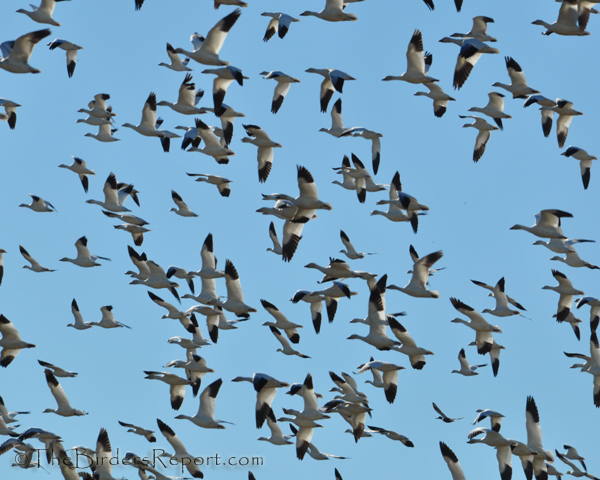
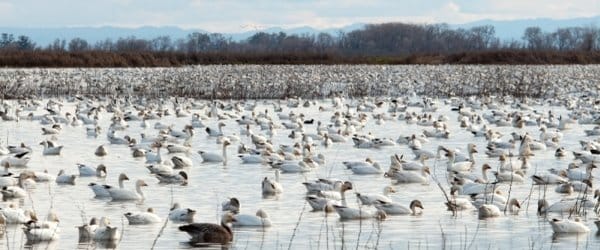

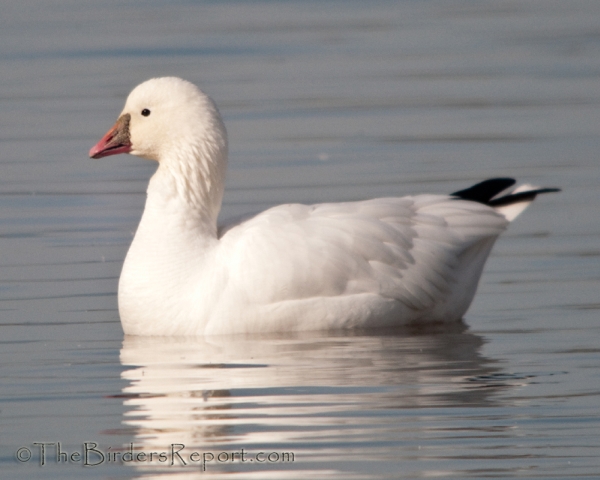
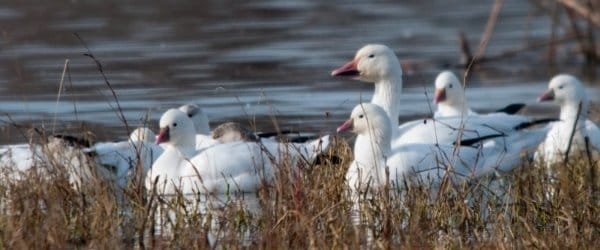
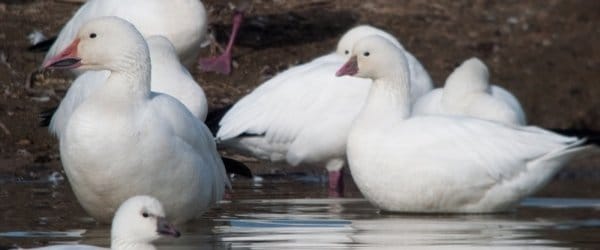
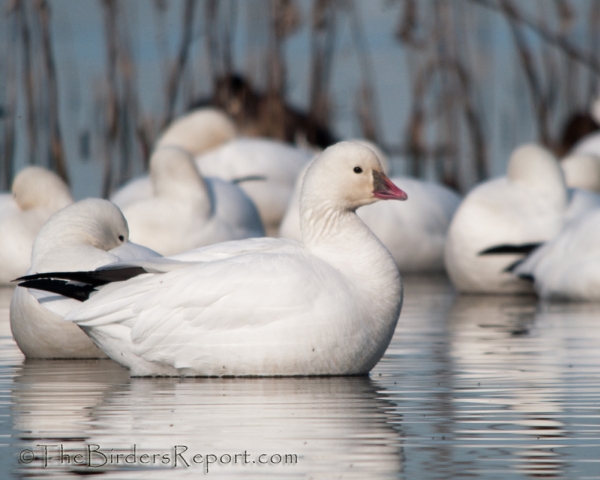
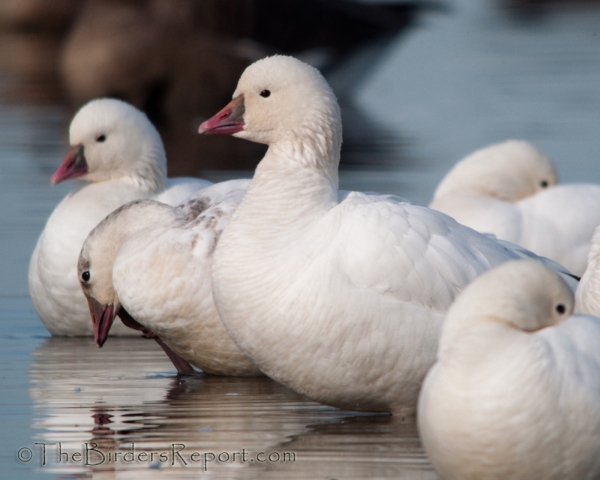
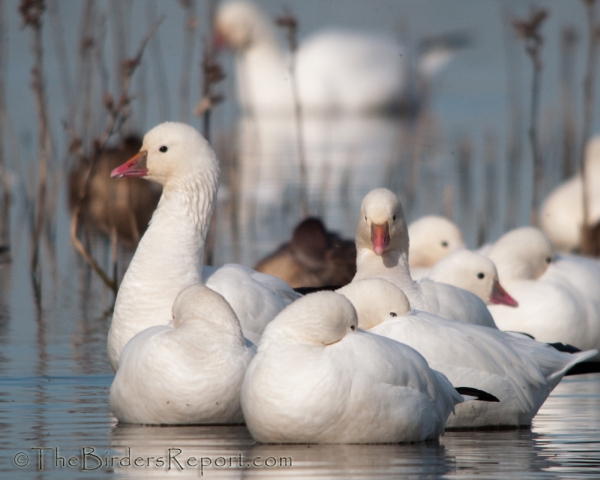
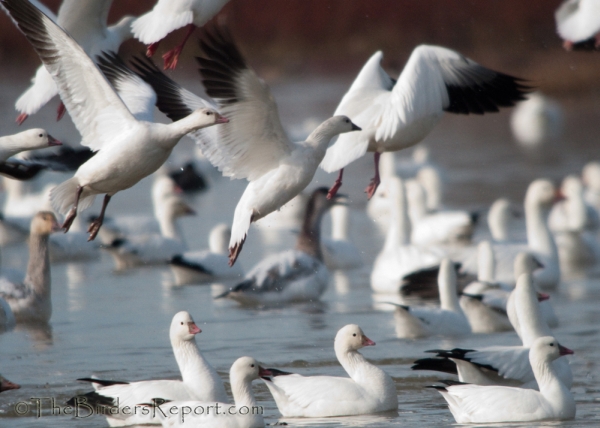











Gorgeous photos Larry. I have often pondered in Snow/Ross’s Geese migration pattern. Right about where the Snake River in Idaho hit the Oregon border is old Fort Boise. In the Spring, there is an amazing migration of Snow Geese…a real spectacle to behold. But in the Fall, they do pass through, but in much smaller numbers. I figure they have either a more wide-spread route south or a different major route all together.
Hmm, Ross’s geese are “easy” to identify if the geese are all awake and the Ross’s isn’t at the back of a pack of 100,000 Snow geese. I once spent hours, freezing my buns off, at Middle Creek WMA sorting through a giant flock of sleeping Snow geese trying to find the single one that was little. It wasn’t until those geese stopped napping that I could finally see the Ross’s, which was my lifer view way back when.
Very nice bird photos, good job